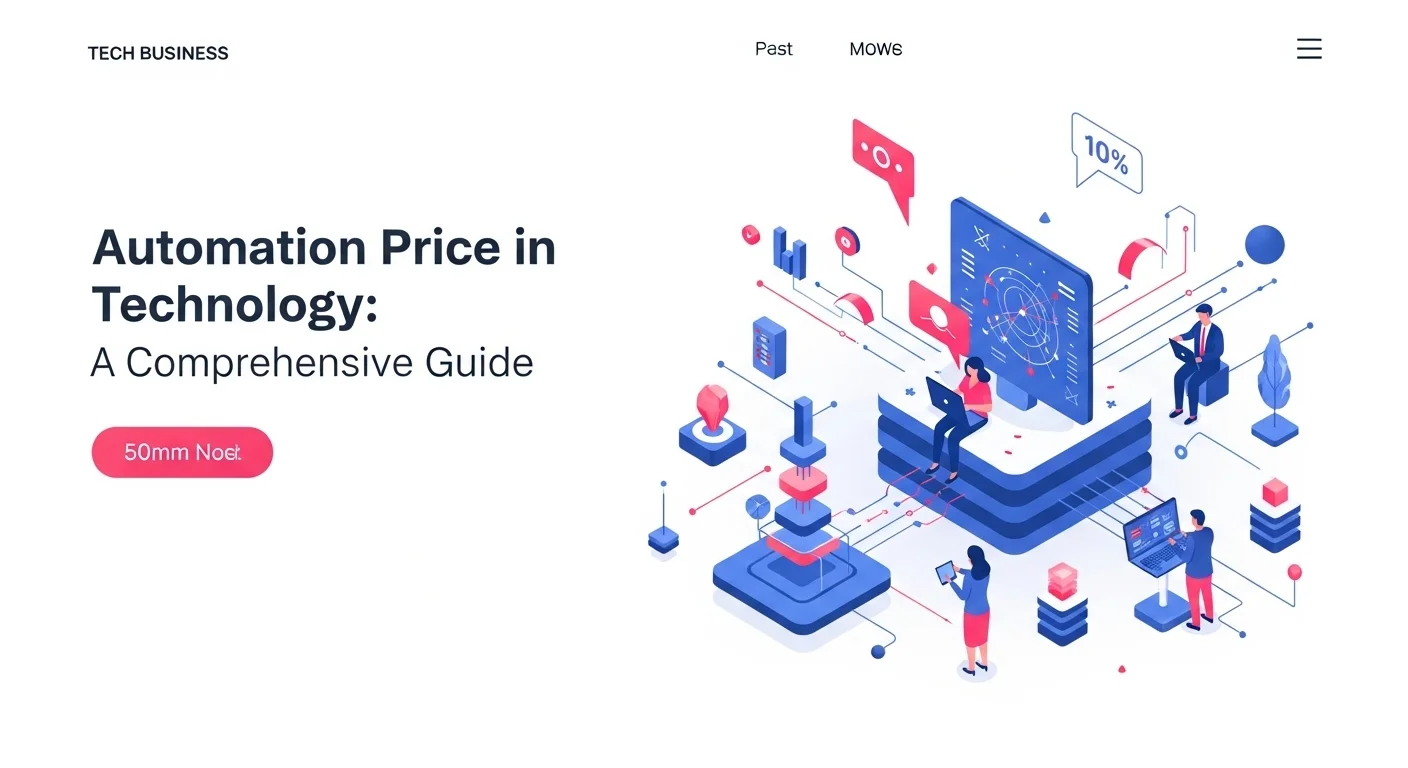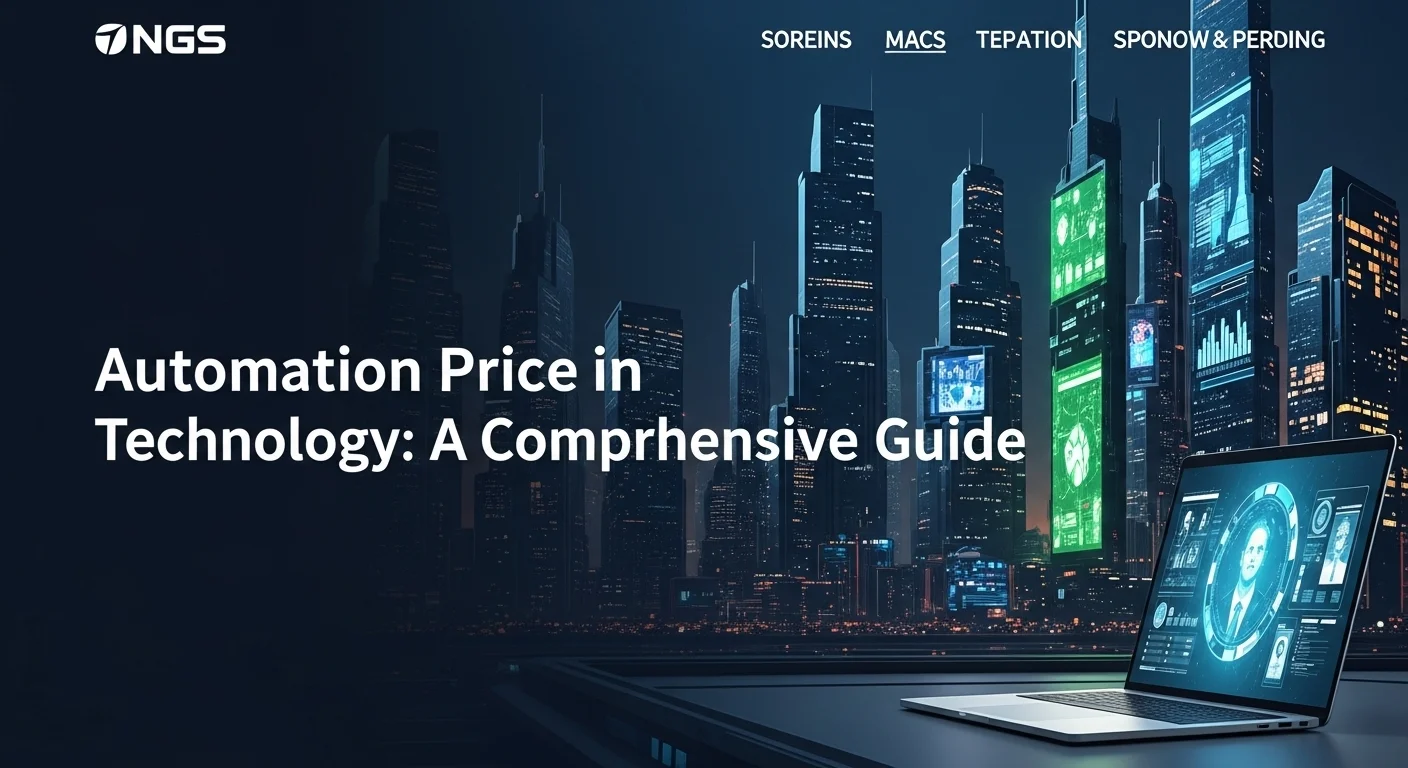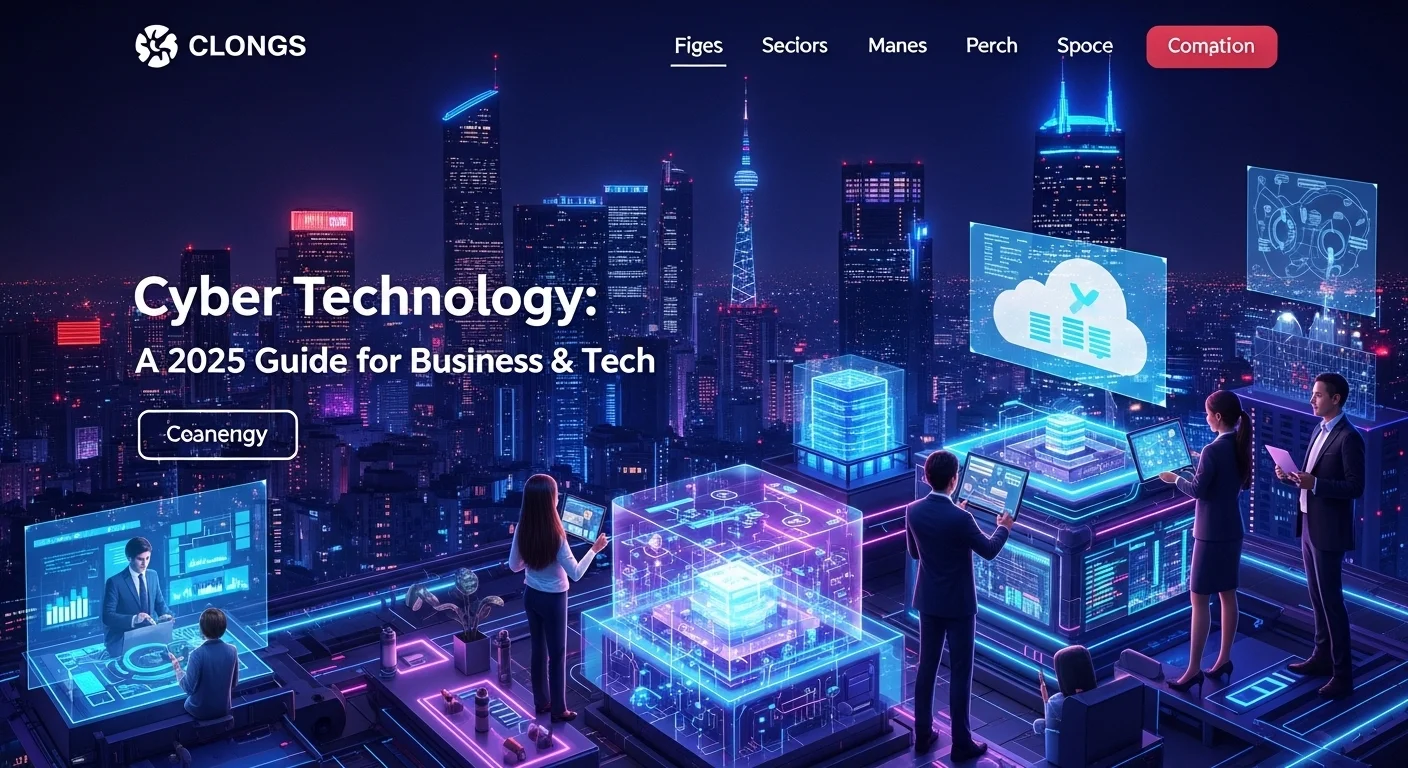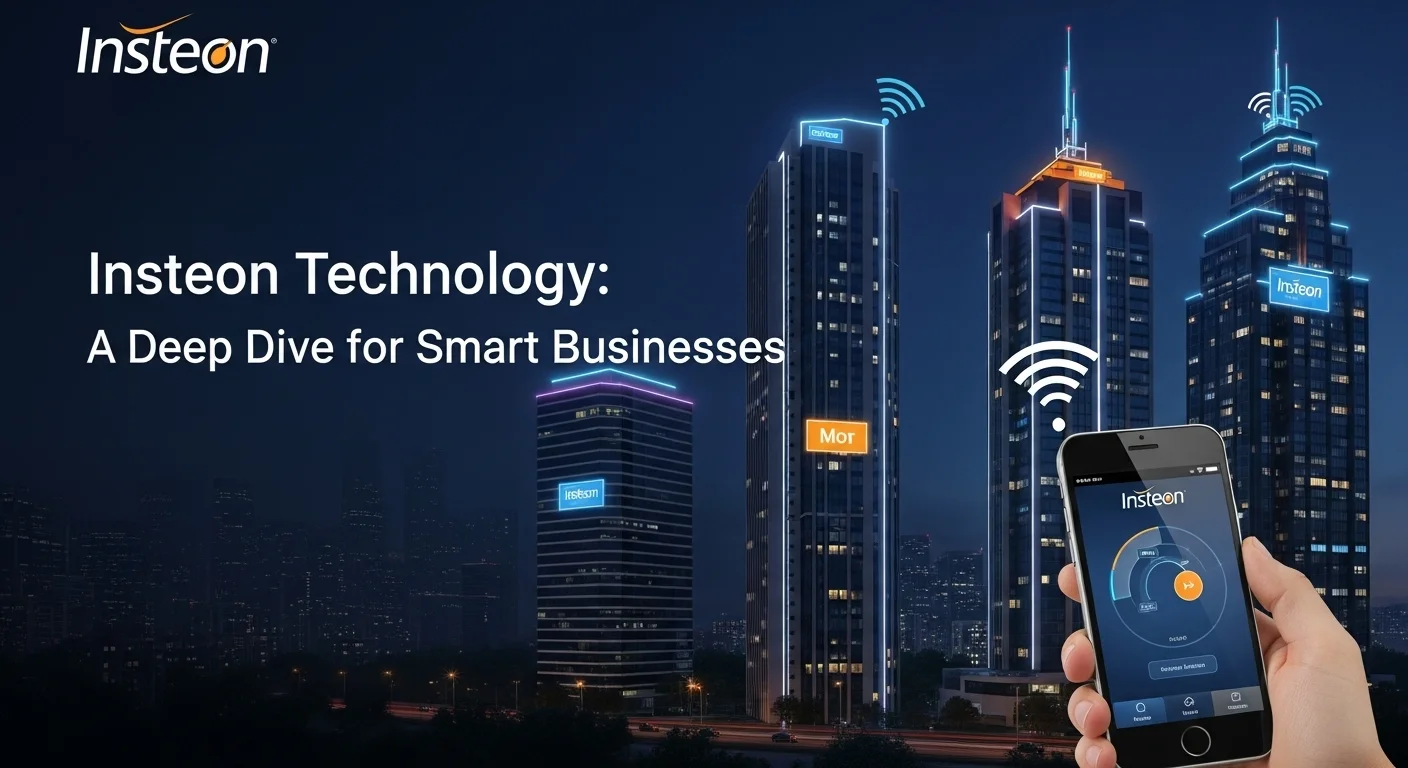What Does Automation Really Cost? A Guide for Homes & Businesses

Executive Summary
When people ask me about the 'price of automation,' it reminds me of asking, 'How much does a vehicle cost?' The answer is always: it depends. Are you buying a reliable family sedan or a high-performance sports car? The same is true for automation. The price isn't just a number on a tag; it's a complete investment in making your life or business run more smoothly. For a company, it’s the cost of AI software or robotic arms, with the goal of boosting profits and cutting down mistakes. For a homeowner, it’s the price of smart gadgets that bring convenience and peace of mind. I've spent years in this field, and I've seen it all. This article is my way of pulling back the curtain on what you'll really pay. We'll look at the costs of hardware, software, and the often-underestimated installation for top brands like Crestron, KNX, and Legrand. By the end, you'll understand the full picture, from the initial check you write to the long-term value you'll get, so you can decide if the investment is right for you.
Table of Contents
Table of Contents
- What Does the Cost of Automation Truly Mean?
- The 5 Core Components of Your Automation Bill
- Why We Care So Much About Automation Costs
- How Much Does a Smart Home System Really Cost? A Look at the Brands
What Does the Cost of Automation Truly Mean?
In my line of work, the term 'Automation Price' isn't just a line on a quote; it's the start of a serious conversation. It's not about buying a single gadget. It's about understanding the Total Cost of Ownership (TCO) and, more importantly, the Return on Investment (ROI) you'll see from that technology. Getting this right is crucial for anyone looking to use tech to work smarter, feel safer, or just enjoy life more. The cost of automation matters because it shapes your budget and determines if a project is even possible. For a business, getting this number wrong can sink a project before it even starts. For a homeowner, a misunderstanding can lead to a system that's either a frustrating disappointment or a financial burden. That's why I believe a clear, honest look at what makes up the full price of automation isn't just helpful—it's absolutely essential for making a smart decision.
The 5 Core Components of Your Automation Bill
To really get it, you have to break down the cost into its essential parts. In my experience, these five pieces make up the total investment you're looking at.
1. Hardware Costs: This is the easy part to see—the physical stuff. In a factory, it’s the robotic arms, sensors, and conveyor belts. In an office, it might be the servers running the show. For your home, it's the smart speakers, thermostats, automated shades, and security cameras. The price tag here can be anything from a few bucks for a sensor to tens of thousands for a sophisticated robot.
2. Software and Licensing Costs: Smart software is the brain behind the brawn. Sometimes, you buy a software license once and you're done. More often these days, especially with AI and cloud services, you're looking at a subscription (SaaS). I see this constantly with Robotic Process Automation (RPA) platforms, which charge yearly or monthly fees based on how many 'bots' you're using. For home systems, you might pay a subscription for premium features like cloud video storage for your cameras.
3. Installation and Integration Costs: This is the one that catches everyone by surprise. A box of smart devices is just a box of parts until it's properly installed. The home automation installation price can swing wildly. A few smart plugs you set up yourself? That's just your time. But for a complex, wired system, you need a pro. I've seen electricians and technicians charge anywhere from $80 to over $200 an hour. In a business, integration can be even more expensive, requiring teams to make sure the new system talks to your existing software. This step is non-negotiable for a system that actually works.
4. Development and Customization Costs: Out-of-the-box solutions rarely fit perfectly. You'll often need some customization. This could mean programming a robot for a very specific task or designing a slick, custom interface for a luxury smart home. These costs are all about paying for the time of skilled programmers and engineers. For high-end homes, this personalization is a huge part of the final bill.
5. Maintenance and Support Costs: An automation system isn't something you can just 'set and forget.' It needs care. This means software updates, security patches, hardware check-ups, and technical support. Many business software vendors sell support packages as a yearly add-on. For homeowners, it's less formal but still real—think replacing batteries, troubleshooting Wi-Fi, or calling a tech when something goes wrong. These ongoing costs are a real part of the long-term cost of automation.
Why We Care So Much About Automation Costs
The reason we dissect these costs so carefully is because the payoff from automation can be huge. In business, it creates a massive competitive edge. Tasks get done 24/7 without getting tired, quality goes up, and human error disappears from repetitive work. Plus, when you automate the boring stuff, your team is free to focus on bigger ideas, which is great for morale and innovation. The ROI for a business is measured in saved labor costs, increased production, and fewer expensive mistakes.
At home, the benefits are just as valuable, but more personal. Automation offers incredible convenience—controlling your entire home with your voice or a tap on your phone. It saves real money on energy bills with smart thermostats and shades. It boosts security with cameras and locks that give you peace of mind. The 'price' you pay is weighed against the very real benefit of a more comfortable, efficient, and secure home.
How Much Does a Smart Home System Really Cost? A Look at the Brands
The smart home market is the perfect example of how much prices can vary. The home automation system price is a spectrum, and it all depends on the brand, the complexity, and how it’s installed.
A huge factor is the home automation installation price. Wireless, DIY systems have almost no installation cost beyond your time. But for a truly solid, reliable system, professional installation is worth every penny. This can mean running new wires and programming a central controller, with labor often billed by the hour.
The Crestron home automation price puts it at the very top of the luxury market. Crestron isn't something you buy off a shelf; it's a custom solution designed and installed by certified professionals. I’ve worked on these systems, and their power and reliability are incredible—they can tie literally every electronic device in your house together. A Crestron project involves detailed planning and custom programming, so the price reflects that. You're looking at a starting point around $15,000-$25,000, with large, complex homes easily surpassing $100,000. It’s a white-glove service for a system perfectly tailored to your life.
The KNX home automation price comes from a different philosophy. KNX isn't one brand; it's an open standard for home and building control. This is its superpower. Over 500 different companies make KNX-certified products that all work together. This gives you amazing flexibility and means you're not locked into one company's ecosystem forever. The cost depends on the parts you choose and the certified KNX integrator who designs and programs it. A basic KNX setup for an apartment might start around $10,000, while larger homes can run from $40,000 to over $100,000. The cost is for the professional expertise needed to build a rock-solid KNX network.
Finally, the Legrand home automation price provides a more approachable, scalable option. Legrand is a giant in electrical systems, and their smart home lines, like those with Netatmo technology, let you start small and grow. You can have an electrician install a few smart switches and outlets without needing a complex central hub. This keeps the initial cost down. Later, you can build up to a more integrated system like MyHOME_Up. This scalability makes Legrand a great middle-ground choice, fitting a wider range of budgets and letting you manage the overall cost in stages.
At the end of the day, understanding the 'Automation Price' is about looking at the complete investment. Whether you're a CEO looking at a massive factory overhaul or a family planning your first smart home, knowing the real cost of hardware, software, installation, and upkeep is the first step to making a smart investment in your future.

The Complete Guide to Automation Costs: Business vs. Home
Figuring out the financials of automation is a strategic game. The 'Automation Price' isn't one fixed number; it's a moving target that changes based on the technology, the goal, and the scale. For anyone from a corporate leader to a tech-savvy homeowner, this guide is my attempt to lay out the real costs you can expect. We'll go beyond the sticker price to uncover the hidden expenses that can make or break a project's budget. By comparing professional business solutions with the systems we use in our homes, we can get a complete picture of the real-world economics of an automated life.
Business Automation: What You're Really Paying For
In the business world, automation isn't a luxury; it's a necessity for staying competitive. The price you pay is a direct investment in efficiency, quality, and growth. Here’s how the costs break down for some of the biggest technologies.
Robotic Process Automation (RPA) & Business Process Automation (BPA) Pricing
RPA and BPA are game-changers, using software 'bots' to handle repetitive digital tasks like data entry or processing invoices. From my experience helping businesses adopt this, the pricing can be complex.
1. The License Models: Vendors like UiPath and Automation Anywhere have a few ways they charge you. A popular one is 'per-bot' pricing, where you pay a yearly fee for every software robot you use. This can be a few thousand dollars for a simple bot that helps a human employee, to over $10,000 a year for a bot that runs complex jobs on its own in the background. Other models might be a flat subscription for the whole platform or paying based on how much work the bots actually do.
2. The 'Hidden' Costs of Implementation: The license is just your ticket to the game. The real cost comes from developing, testing, and deploying the bots. This usually means hiring specialized RPA developers or consultants, and their time isn't cheap—think $150 to over $500 an hour. A simple bot might take a week or two to build; a complex one can take months.
3. Infrastructure and Upkeep: These bots need a digital home to live in, which could mean buying or renting server space. And here's the kicker: maintenance is constant. I've seen countless projects where a simple website update breaks a bot, and suddenly that 'cheap' automation needs expensive developer time to fix. Some studies show that the software license is only about 25-30% of the total RPA cost. The rest is all development, implementation, and maintenance.
The total investment in automation for an RPA project can start at $10,000-$15,000 for a small test and scale to millions for a huge company-wide deployment. The only way it makes sense is by carefully calculating the ROI from saved labor costs, fewer errors, and faster work.
Industrial Automation & IIoT Pricing
When we talk about industrial automation, we're talking about physical machines—robots, control systems, and sensors automating a factory floor. This is heavy on upfront capital spending (CapEx).
1. The Hardware: A factory robot arm might cost between $25,000 and $400,000. But I always tell clients that the robot itself is only about one-third of the total cost. The other two-thirds? That’s for integration, safety systems like cages and light curtains, the tools the robot uses (like a gripper or a welder), and the programming.
2. Engineering and Integration: Dropping a robot onto a production line is a massive engineering feat. It involves mechanical design, electrical wiring, and custom programming to make sure it all works safely and efficiently with everything else. This takes highly skilled (and expensive) engineers.
3. The IIoT (Industrial Internet of Things) Angle: Adding IIoT means embedding sensors everywhere to collect data. This data gets sent to the cloud for analysis, allowing for things like predicting when a machine will break down. This adds a recurring operational cost (OpEx) for cloud storage and analytics software subscriptions.
The ROI here is calculated from higher output, better quality, less waste, and a safer workplace. A company typically wants to see a return on its investment within 1 to 3 years.
A Real-World Comparison of Smart Home System Costs
For homeowners, the thinking is similar to a business, just on a smaller scale. You want to get the most value—be it convenience, security, or energy savings—for your budget. The biggest variable in the total home automation system price is often the professional installation. The home automation installation price can be a few hundred dollars for a quick job or tens of thousands for a large, fully wired home.
Top Tier: Crestron and Control4
The Crestron home automation price puts it at the pinnacle of the market. It’s a fully custom, pro-installed system. A typical project starts in the tens of thousands and can easily hit six figures. Why so much? Unmatched power and reliability. It can smoothly integrate everything—lights, climate, security, whole-home audio/video, even the pool—into one flawless interface programmed just for you. The price buys you the whole package: design, hardware, programming, and white-glove service. It’s an investment in a lifestyle, perfect for luxury homes where performance is everything.
The Flexible Powerhouse: KNX
The KNX home automation price is built on flexibility. As an open standard, you can mix and match parts from hundreds of companies, which is great for future-proofing. You're never locked in. The cost is based on the individual components you pick, plus the crucial labor of a certified KNX programmer who designs the system. As a rule of thumb, a basic system might cost between €50-€75 per square meter, while a more decked-out installation could be over €150 per square meter. For a 2,000 sq ft home, that could be anywhere from $10,000 to over $30,000. With KNX, you're investing in a super-reliable wired backbone that's built to last for decades.
The Grow-With-You System: Legrand
The Legrand home automation price offers a more gradual path. With their Netatmo-enabled products, you can start small. You can replace a few light switches or outlets with smart ones, keeping the initial cost low. As your needs and budget grow, you can add more devices, eventually creating a fully integrated system. This model bridges the gap between simple DIY gadgets and expensive all-in-one systems. It makes the total cost of automation more manageable by letting you pay as you go.
The DIY Route: Alexa, Google & Apple
For context, we have to talk about the DIY systems built around hubs from Amazon, Google, or Apple. The hardware is much cheaper. A smart speaker is under $100, smart bulbs are $15-$50, and a smart thermostat is around $200. You could build a decent system for under $2,000. The main 'cost' here is your own time for setup, troubleshooting, and juggling different apps. While they're super popular, they just don't have the rock-solid reliability or seamless integration of a professionally installed wired system like KNX or Crestron. The home automation installation price is zero in dollars, but the 'sweat equity' can be significant.
To sum it up, the 'Automation Price' is a complex puzzle. For businesses, it's a strategic investment in efficiency. For homeowners, it's a choice between affordable DIY, scalable systems like Legrand, flexible standards like KNX, and ultimate luxury like Crestron. The key is to always look beyond the initial price tag and consider the whole picture: software, installation, maintenance, and the real value you'll get in return.

My Best Advice for Getting the Most from Your Automation Investment
Getting the best value from your automation project is the end goal. I always tell my clients that the 'Automation Price' shouldn't be seen as just an expense to be slashed, but as a strategic investment to be optimized. This takes more than just hunting for the cheapest gear; it requires smart planning, a clear vision, and a focus on long-term value over short-term savings. The right approach can transform your experience, ensuring the solution you choose actually delivers on its promise of a better, easier, or more profitable life. Whether you're a business leader planning a digital transformation or a homeowner wanting a smarter living space, these are my tried-and-true tips for navigating the costs and getting the best possible results.
My Strategies for Businesses to Optimize Their Automation Spend
For any business, getting the automation price right is a masterclass in financial planning. The aim is to hit your operational goals without overspending or picking a solution that can't grow with you.
1. Start with a Pilot Project: I can't stress this enough. Before you go all-in on a massive rollout, start small. Pick one process that's straightforward but has clear room for improvement. This lets you test the tech, learn about the real-world hurdles, and measure the ROI on a manageable scale. A successful pilot is the best way to build a case for more investment and gives your team invaluable hands-on experience.
2. Calculate the Total Cost of Ownership (TCO): So many people make the mistake of focusing only on the upfront cost of the software or hardware. You have to calculate the TCO. This means including the costs of implementation, integration, training your staff, and ongoing maintenance. The true cost of automation for a factory robot isn't just the sticker price; it's the safety cage, the custom gripper, the programming, and the yearly service contract. A full TCO picture saves you from nasty budget surprises later.
3. Hunt for High-ROI Processes: Go after the low-hanging fruit first. The best candidates for automation are tasks that are repetitive, rule-based, high-volume, and where people tend to make mistakes. Think about processing invoices, moving data between systems, or running quality checks. Automating these will give you the quickest and biggest wins.
4. Use the Cloud to Your Advantage: To avoid massive upfront hardware costs, look at cloud-based automation platforms (SaaS). This turns a big capital expense into a predictable monthly or yearly operational expense, which is often easier to budget for.
5. Don't Cheap Out on Training: The fanciest tech in the world is useless if your team doesn't know how to use it or actively resists it. Investing in good training is non-negotiable. It helps your staff manage the new systems and, just as importantly, helps them see automation as a tool that helps them, not one that replaces them. Getting that culture shift right is key to long-term success.
My Tips for Homeowners to Get the Smart Home They Really Want
For homeowners, the goal is to build a home that's more convenient, secure, and efficient—one that fits your life and your budget. My advice here is all about making smart choices that pay off for years.
1. Define Your 'Why' Before Your 'What': Before you look at a single product, ask yourself what you really want to achieve. Don't just say 'I want a smart home.' Get specific. 'I want to stop worrying if I left the garage door open.' 'I want to cut my energy bill by 15%.' 'I want to have music in every room with the press of a button.' Your 'why' will guide every decision and prevent you from wasting money on gadgets you don't need.
2. Be Honest: DIY or Pro? Take a moment for some real self-reflection. How tech-savvy are you, and how much free time do you *really* have? A DIY setup can save on labor, but a client of mine once spent weeks trying to get three different brands to work together, only to call me in to fix the frustrating mess. For anything involving electrical wiring, hiring a pro is a must for safety. That home automation installation price is an investment in reliability and your own sanity.
3. Think About the Future: Tech changes fast. To avoid having an obsolete system in five years, choose platforms built on open standards. This is the big advantage of the KNX home automation price; as an international standard, you know it will be supported for decades by hundreds of companies. For wireless gear, look for emerging standards like Matter, which promises to unite the smart home world. This protects your investment.
4. Get Multiple Quotes for Big Projects: If you're looking at a high-end system like Crestron or a full KNX installation, you absolutely must talk to multiple certified installers. The final Crestron home automation price can differ between dealers. Give each one the exact same wish list. This lets you compare not just the bottom line, but their approach, the quality of the gear they recommend, and the support they offer after the job is done.
5. Start Small, Think Big: If a full-blown system isn't in the budget right now, look at a scalable ecosystem. The Legrand home automation price structure is a great example. You can start with smart lighting and expand over time to include shades, climate control, and more as your budget allows. This phased approach makes the total cost of automation much less intimidating.
Keeping Up with AI and Learning More
Artificial Intelligence (AI) is making automation smarter every day. In business, it can find the best processes to automate for you. In the home, it helps voice assistants understand you better and lets thermostats learn your habits. While AI features can add to the initial price, they often boost the ROI by making the system more effective.
To stay on top of it all, I always recommend reading up from quality sources. Expert analysis from places like Gartner or deep-dive articles on tech sites like TechCrunch can give you insights that go way beyond a sales brochure. Making an informed decision is the best strategy of all.
Ultimately, getting the automation price right is a strategic journey. For businesses, it's about discipline and focusing on TCO and ROI. For homeowners, it’s about making smart choices that match your lifestyle and budget. By using these tips, you can ensure your investment in technology is a gateway to a better, more efficient future.
Expert Reviews & Testimonials
Sarah Johnson, Business Owner ⭐⭐⭐
The information on automation costs is solid, but I would have loved to see a few more real-world case studies for small business owners like me.
Mike Chen, IT Consultant ⭐⭐⭐⭐
This is a very helpful article on automation pricing. It clarified a lot for me, though a couple of the more technical concepts could be broken down even further.
Emma Davis, Tech Expert ⭐⭐⭐⭐⭐
Excellent article! So thorough on the real cost of automation. It was incredibly helpful for my work and I understood everything perfectly. Great job!



